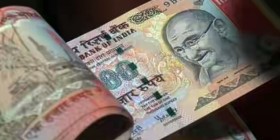There has been a notable drop in cash withdrawals from banks and ATM branches from its peak post the demonetisation of Rs 500, Rs 1,000 notes, according to a research report by State Bank of India. According to the report, “post demonetisation (i.e. after 30th December), cash withdrawals have been declining rapidly from a peak of Rs 528 billion for the week ended 13th January to Rs 325 billion recently (week ended 24th March). Even in the span of one week (i.e. between 17th to 24th March), cash withdrawal has declined by Rs 20 billion. The decline in cash withdrawals is intriguing even as limits on withdrawals have been removed completely from 13 March.”
SBI group Chief Economic Adviser, Soumya Kanti Ghosh, the author of this report, is not sure why the drop in cash withdrawals have happened even after withdrawal limits are removed. “What could be the possible reasons? Are people now averse to cash withdrawals because of strict monitoring? Or, there is indeed a shift to digital transactions? We are indeed not sure,” Ghosh writes, adding, “It may be also noted that with the implementation of ban on cash transactions of over Rs 2 lakh from 1 April, further decline in cash withdrawals may be a possibility.”
While it may be difficult to ascribe a reason,” Ghosh says, “our estimates indicate that there would be a permanent liquidity injection of least Rs 1.7 lakh crore / 1.1 percent of GDP post demonetisation. This data is a reflection of the extent of formalisation of the economy post demonetisation.” Now, let’s look at the two possible scenarios that could have led to a sharp drop in the cash withdrawals.
A surge in digital cash transactions, something the Narendra government has been pushing for since the note ban, can lead to lower cash withdrawals. Is it that what has happened? According to data available on the Reserve Bank of India (RBI) site, total digital transactions, including those at internet banking sites, UPI, mobile banking and PoS terminals, in the first 26 days of March (till when the data is updated), stood at 7,070 lakhs valuing at Rs 105.6 lakh crore. This is against 7,630 lakh transactions in February (valuing at Rs 92.5 lakh crore), 8,704 lakh transactions in January (valuing at Rs 97.01 lakh crore) and 9,575 lakh transactions (valuing at Rs 104 lakh crore) in December- a month after demonetisation.
This means the number of digital transactions has fallen steadily since the peak in December, so is the value of transactions except in the month of March. Towards March, indeed there is an increase in the total value of digital transactions while the volume has fallen. But, the spike in digital transactions in March could be also due to the financial year ending and banking holidays, leaving less cash in circulation.
But the second possibility that ATMs simply do not have enough cash to meet the cash withdrawal needs of the customer. According to a report in Mint News Paper ,even after three weeks of RBI lifting cash-withdrawal limits, ATMs continue to run dry in several locations, primarily due to lack of availability of lower denomination notes. “There has been a steep fall in currency production. Earlier, if the presses were printing 150 million pieces of all denominations a day, it has now fallen to 110 million pieces,” the report quotes an unnamed senior bank official. There are reports from different parts of the country that talks about ATMs running dry.
Of course, one needs to wait and watch for trends in the next several months to understand how the behavior of bank customers is changing in India post the note ban. Demonetisation has indeed helped banks to garner large amount of deposits. This money can turn out to be a boon for the economy if lent to productive sectors. But, unless this money is used to lend to industries for new projects, this chunk of money will not benefit the economic growth, instead may result in higher carry cost for banks. This is one reason why banks are aggressively parking their cash in government securities (much above their mandatory requirement).
As far as the cash withdrawal trends are concerned, as of now a main reason for the downward trend in cash withdrawals in March appears to be that there is simply not enough lower denomination notes available in the banking system (one likely reason why the RBI is now thinking of introducing Rs 200 notes) to fill the ATMs, rather than because of a sudden, significant migration to the digital transactions. Data from the next few months would give us a clearer picture.






Leave a reply